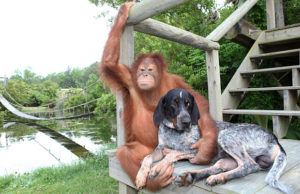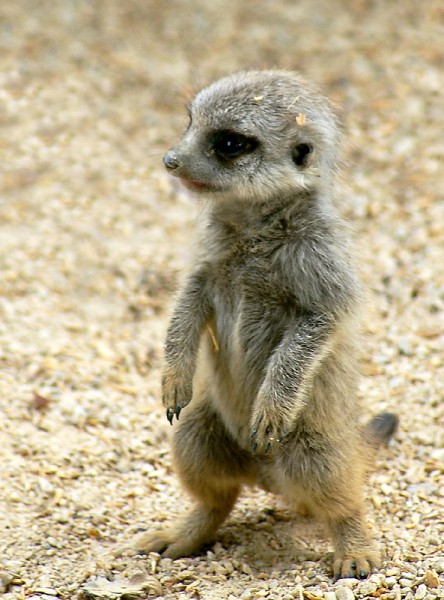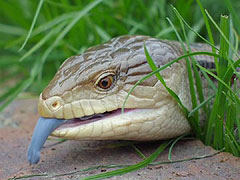You can tell I like monkeys, can’t you? Did you know that orangutans have been called the world’s most intelligent animal in a study that places them above chimpanzees and gorillas, that they are considered closest to the human in evolutionary development?
 Here’s a sweet story for you. After losing his parents, the three-year-old orangutan pictured above was so depressed he wouldn’t eat and didn’t respond to any medical treatment. The veterinarians thought he would surely die from sadness. The zoo keepers found an old sick dog on the grounds in the park at the zoo where the orangutan lived and took the dog to the animal treatment center. The dog arrived at the same time the orangutan was there being treated. The two lost souls met and have been inseparable ever since.
Here’s a sweet story for you. After losing his parents, the three-year-old orangutan pictured above was so depressed he wouldn’t eat and didn’t respond to any medical treatment. The veterinarians thought he would surely die from sadness. The zoo keepers found an old sick dog on the grounds in the park at the zoo where the orangutan lived and took the dog to the animal treatment center. The dog arrived at the same time the orangutan was there being treated. The two lost souls met and have been inseparable ever since.








